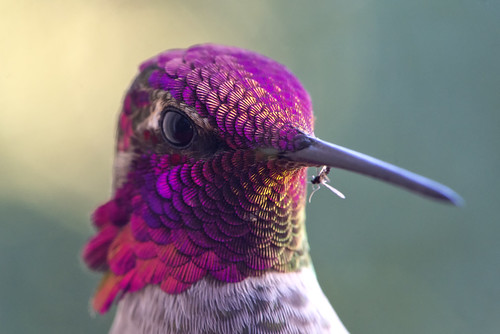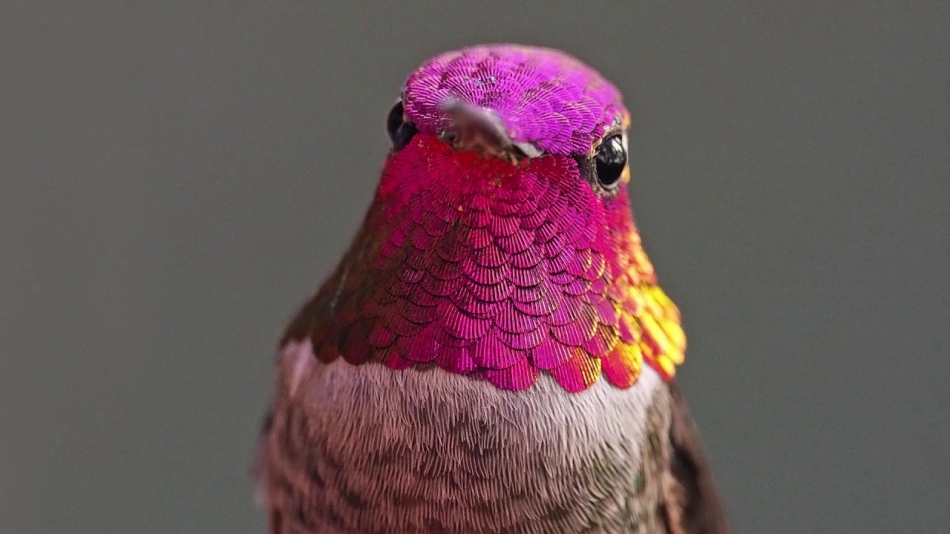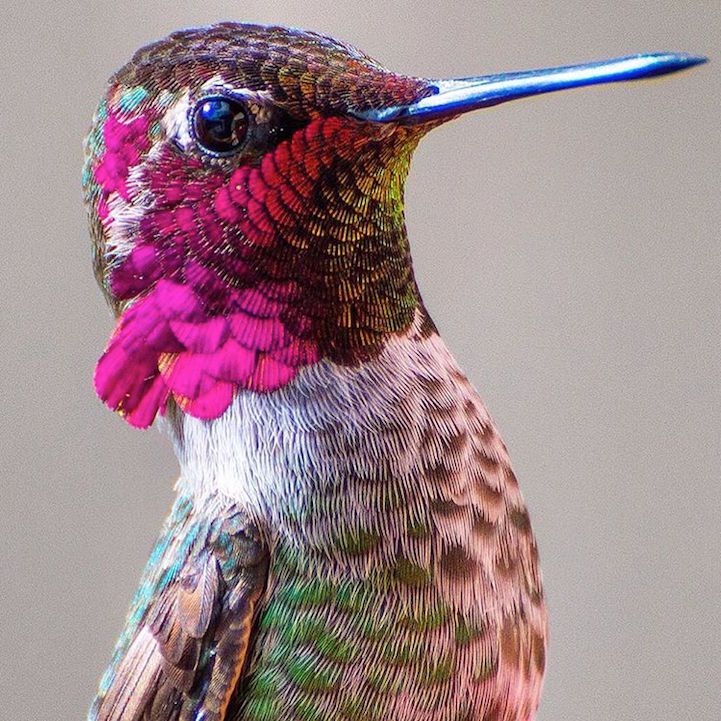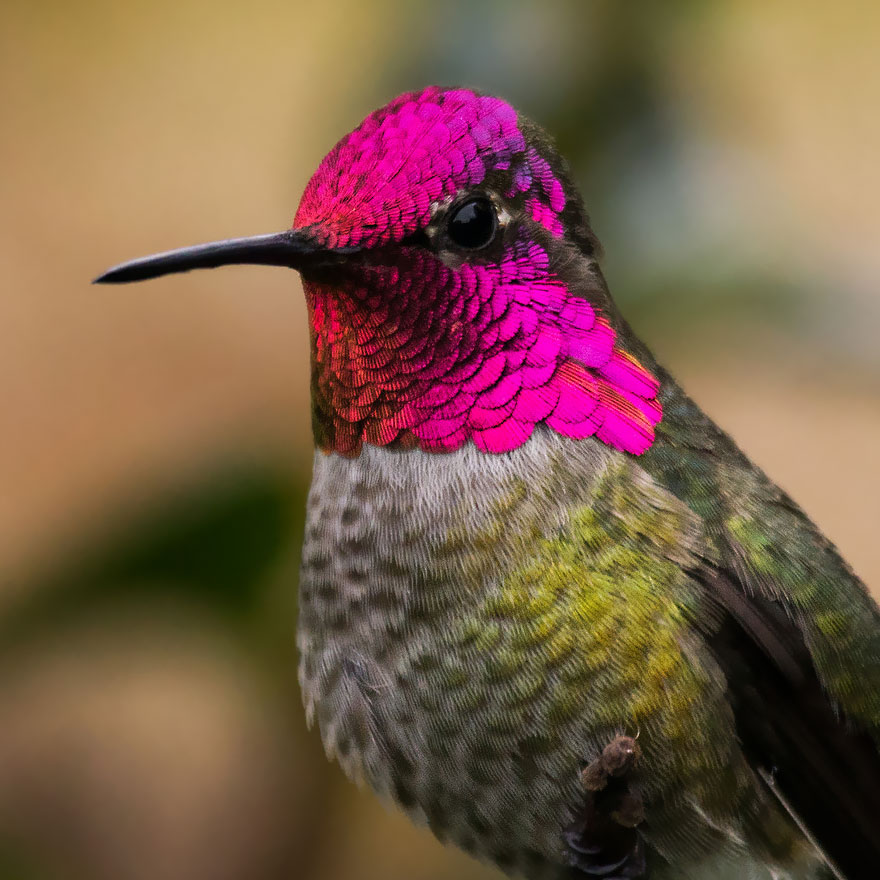The texture in animals skin it is very beautiful, and you can for sure say that not two of them are alike. The texture on birds feathers for example it’s so pretty , that sometimes it makes you think that those colorful birds are usually native to some tropical areas.

Since the 1950s, Anna’s hummingbird (Calypte anna) has expanded its breeding range both north and east. Very common in much of its range, adapting well to suburban areas. Their habitats are gardens, chaparral, open woods. Found in a wide variety of habitats within its range, including streamside groves, chaparral, open oak woodland, coastal sage scrub, gardens, city parks. Most common in lowlands and lower mountain slopes, but may wander to high mountain meadows in late summer.

This hardy little bird is a permanent resident along our Pacific Coast, staying through the winter in many areas where no other hummingbirds are present. More vocal than most hummingbirds, males have a buzzy song, often given while perched. In recent decades the species has expanded its range, probably helped along by flowers and feeders in suburban gardens; it now nests north to British Columbia and east to Arizona.

Feeding Behavior: Their feeding behaviors are at flowers, usually feeds while hovering, extending its bill and long tongue deep into the center of the flower. At feeders, may either hover or perch. To catch small insects, may fly out and take them in midair, or hover to pluck them from foliage. Young: Female feeds the young, sticking her bill deep into their mouths and regurgitating tiny insects, perhaps mixed with nectar. Age of young at first flight about 18-23 days.

Eggs And Diet: Incubation is by female only, 14-19 days. Young: Female feeds the young, sticking her bill deep into their mouths and regurgitating tiny insects, perhaps mixed with nectar. Age of young at first flight about 18-23 days. Mostly nectar and insects. Takes nectar from flowers, and will feed on tiny insects as well. Will also feed on sugar-water mixtures in hummingbird feeders.

Anna’s hummingbird Nesting: May begin nesting in December, or even earlier. In courtship display, male hovers in midair, giving buzzy song, then flies much higher; he then dives steeply toward the female, making a loud explosive popping sound at the bottom of the dive. Also buzzes back and forth in front of female in short shuttling flights. Nest site is variable, usually on a branch of tree or shrub, sometimes in vines, on wires, under eaves. Usually 4-25 feet above ground, can be lower or higher. Nest (built by female) is a compact cup of plant fibers and spider webs, lined with plant down and sometimes feathers, the outside camouflaged with lichens.





